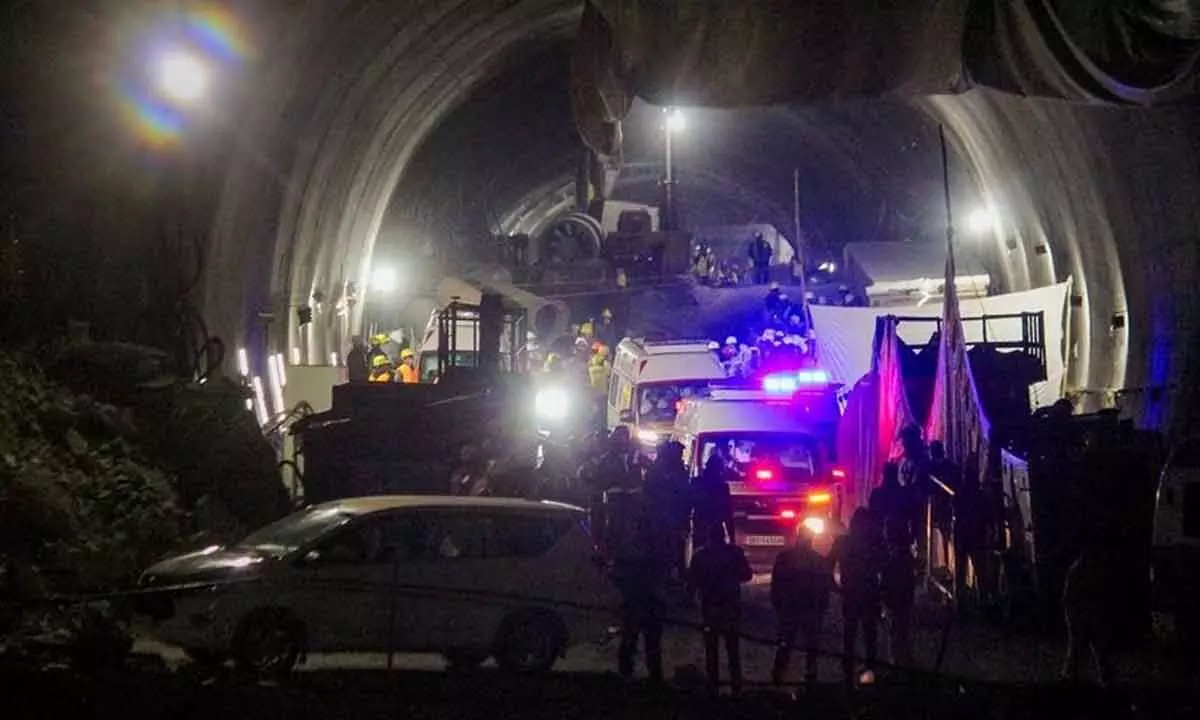Worker safety should see light at the end of the tunnel
image for illustrative purpose

As we celebrate the success of the rescue mission that saved 41 workers trapped in the Silkyara tunnel in Uttarakhand for 17 days, we should not ignore the grim realities that normally go unnoticed, the one concerning safety measures in infrastructure projects and the working conditions of construction workers. Even otherwise, we have witnessed a large number of mishaps that could have been averted or their severity reduced had simple precautionary steps been taken. For instance, the tragic Uphaar Cinema fire in June 1997, which killed 59 persons, may not have been as deadly had the management installed a public announcement system, emergency lights and exit lights and not blocked exits and gangways, which led to such a heavy toll. The 4.53 km long two-lane bi-directional Silkyara Bend-Barkot Tunnel, cleared by the Cabinet in 2018, was supposed to provide all-weather connectivity to Yamunotri, one of the dhams on Chardham Yatra. It is part of the 900-km long Char Dham road project intended to boost tourism, pilgrimage and military mobilization whenever required.
The Rs 12,000-crore project was earlier challenged by environmentalists on the grounds that the Himalayan ecology was fragile. The Supreme Court, however, allowed the Central government to construct it in December 2021 after it was assured by the Centre that necessary steps were in place to mitigate any mishap. Apparently, something was amiss. The National Highways Authority of India (NHAI) has now directed its experts to visit the site and submit a final report within seven days besides fixing responsibility for the collapse. It goes to the credit of the authorities at all levels that no stone was left unturned to keep the trapped workers safe. From state-of-the-art equipment and techniques to the antiquated rat-hole mining method, everything was deployed to ensure that each of them could be rescued. The result was as desired. All workers were brought out safe and without any injury, whatsoever. Hopefully, such concern for workers should not fade. There are laws and rules and regulations for the safety and protection of workers—most of these, unfortunately, are observed in the breach.
It is a common sight to find men working on buildings 20 or more feet above ground without much safety gear. A Deloitte report says that while construction contributes more than one-tenth to India’s GDP, it is also one of the largest employers in the unorganized sector.
Formalization of a sector may take time, but the safety of those making buildings, roads and bridges cannot wait till tragedy strikes. Moreover, as regards India, it is not just the construction sector where worker safety is abysmal. A recent news report said that around 60 districts in India failed to declare themselves ‘manual scavenging free’ by the end of August, missing the government’s deadline. This is despite the Prohibition of Employment as Manual Scavengers and Rehabilitation Act, which banned such inhuman practices in 2013. The government has to ensure that the existing laws and rules are implemented in letter and spirit. Also, this should be done in a manner that is reasonable, lest the implementation sees a return of the dubious ‘inspector raj’, thereby self-defeating the very purpose of the exercise.

